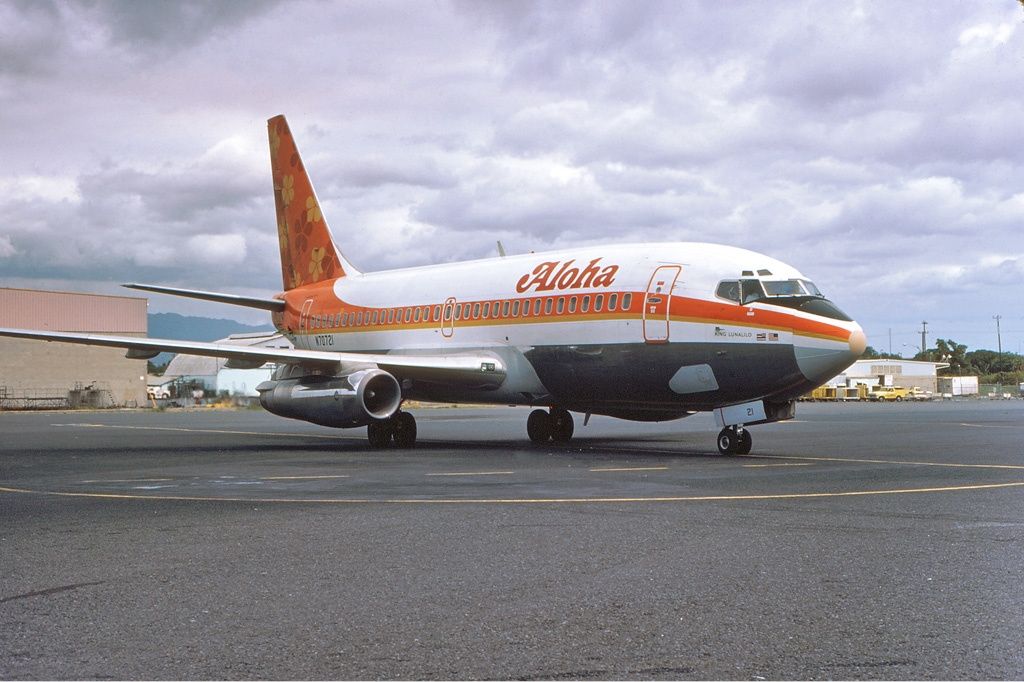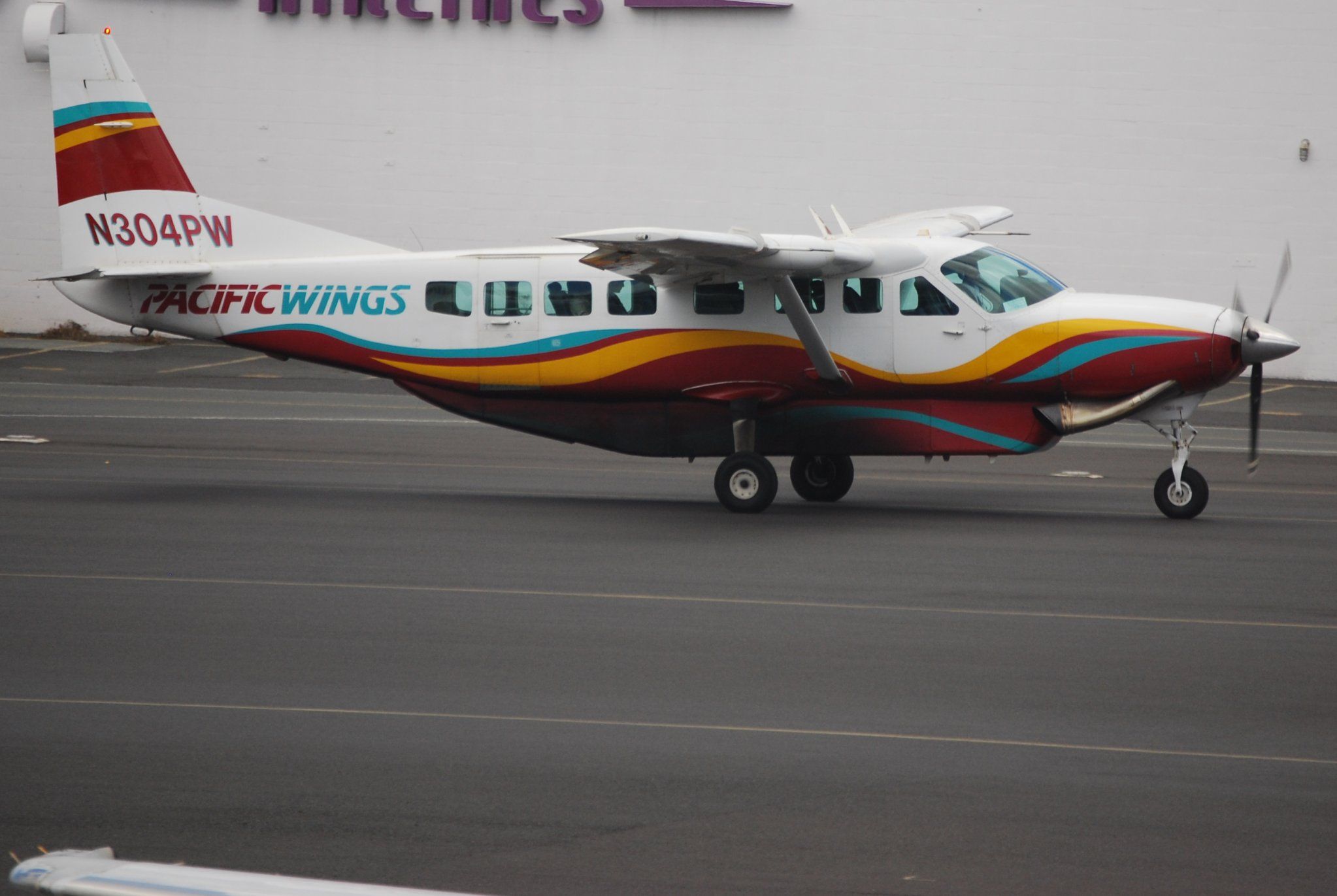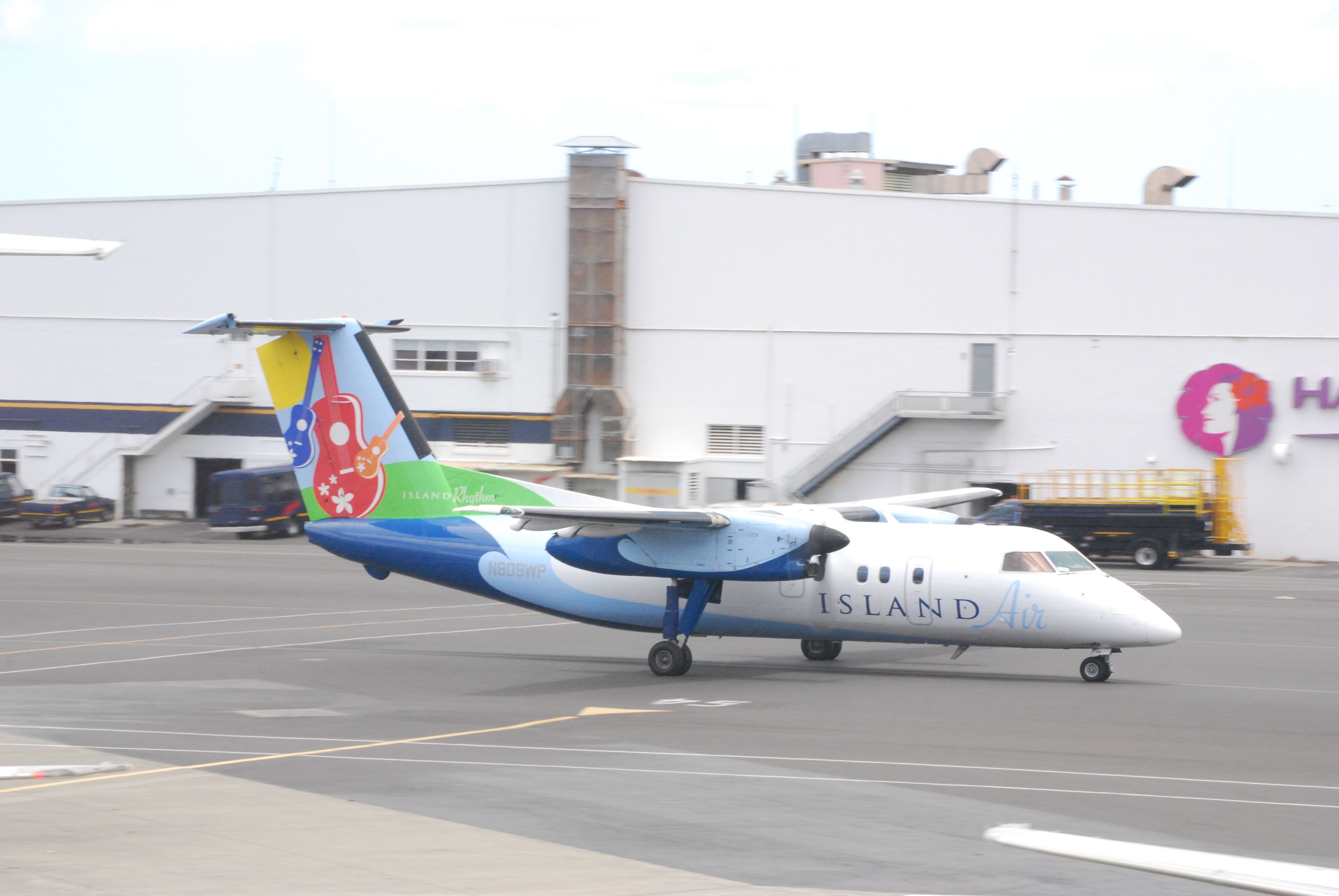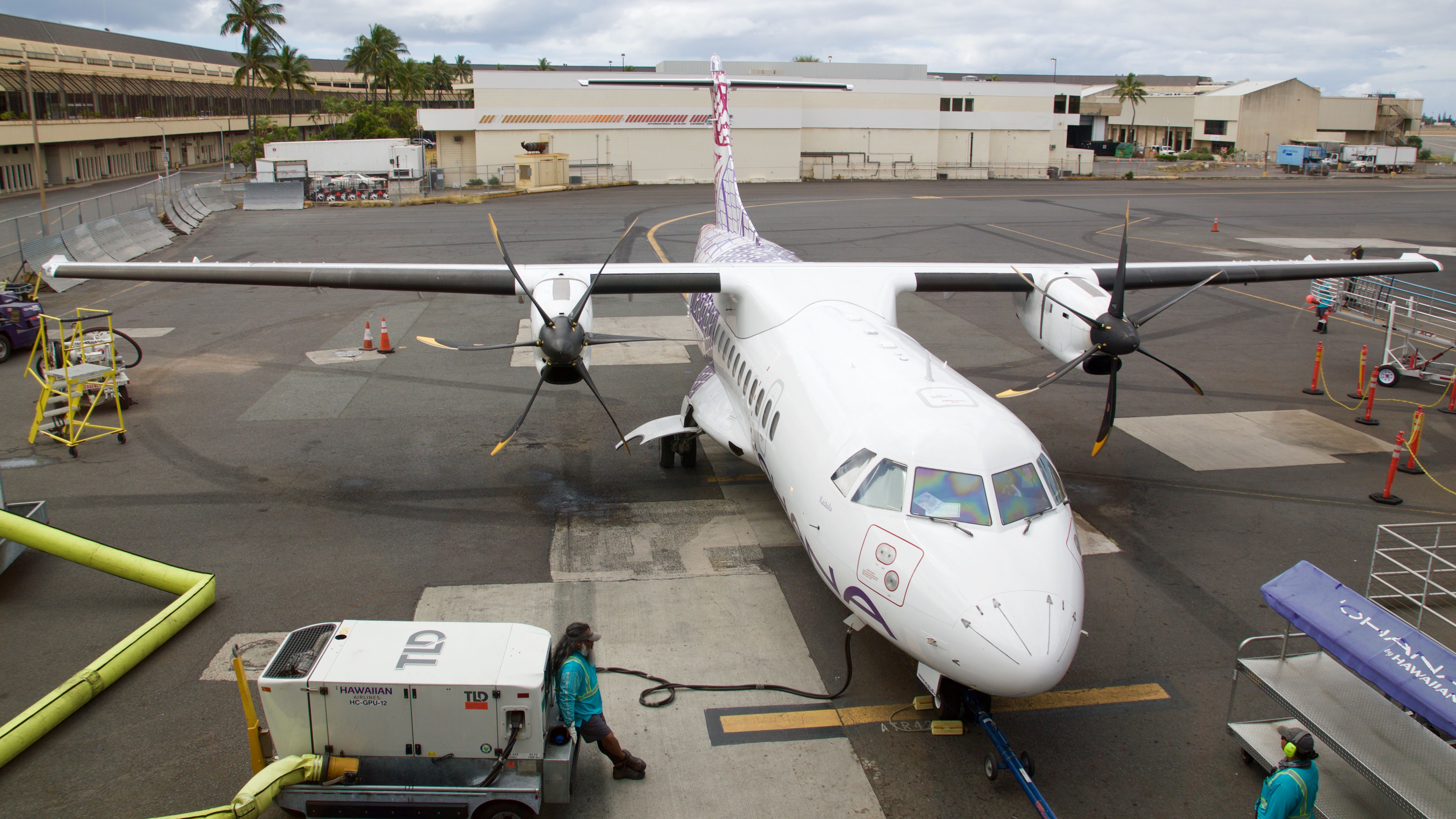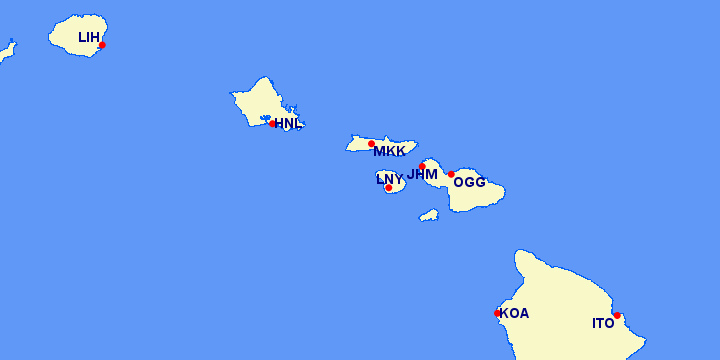As an island state, air travel is crucial for Hawaii, enabling vital connections for its people, businesses, and visitors. Hawaii’s aviation history dates back to the mid-1900s, and since then, a number of airlines have come and gone. Simple Flying takes a look at five once well-known Hawaiian carriers that have been lost to history.
1
Aloha Airlines
60 years of service
With a name that says it all, Aloha Airlines was once one of Hawaii’s most recognizable airline brands. For a good 60 years, this airline linked the group of islands with the US mainland and the Pacific region.
Aloha Airlines’ roots go back to the very start of commercial aviation. Indeed, this airline was founded in 1946. Initially, the airline was named Transpacific Airlines as its aim was to connect Hawaii with the two sides of the Pacific Ocean – the US and Asia. Based in Honolulu, the airline initially operated a fleet of nine Douglas DC-3s, which remained the airline’s backbone until 1965.
Over the years, the airline experimented with different aircraft types, including:
- Six Fairchild F-27s
- Four Vickers Viscount 745Ds
- A BAC 1-11
- A McDonnell Douglas DC-10-30.
Nonetheless, from the 1970s, the core of Aloha Airlines’ fleet was the Boeing 737, as shown in the table below. The Boeing 737-200 was the fundamental cornerstone of Aloha Airlines’ fleet. It was predominantly operated on interisland routes. The -700 variant, on the other hand, was mainly used to reach US and Asian destinations.
|
Aircraft type |
Number operated |
|
Boeing 737-200 |
29 |
|
Boeing 737-300 (Freighter) |
1 |
|
Boeing 737-700 |
13 |
|
Boeing 737-800 |
1 |
On April 28th, 1988, one of Aloha Airlines’ Boeing 737-200s was involved in a severe cabin depressurization accident. The crew managed to land the plane safely. The incident, which caused the partial destruction of the front part of the fuselage midair, cost the life of a cabin crew member.
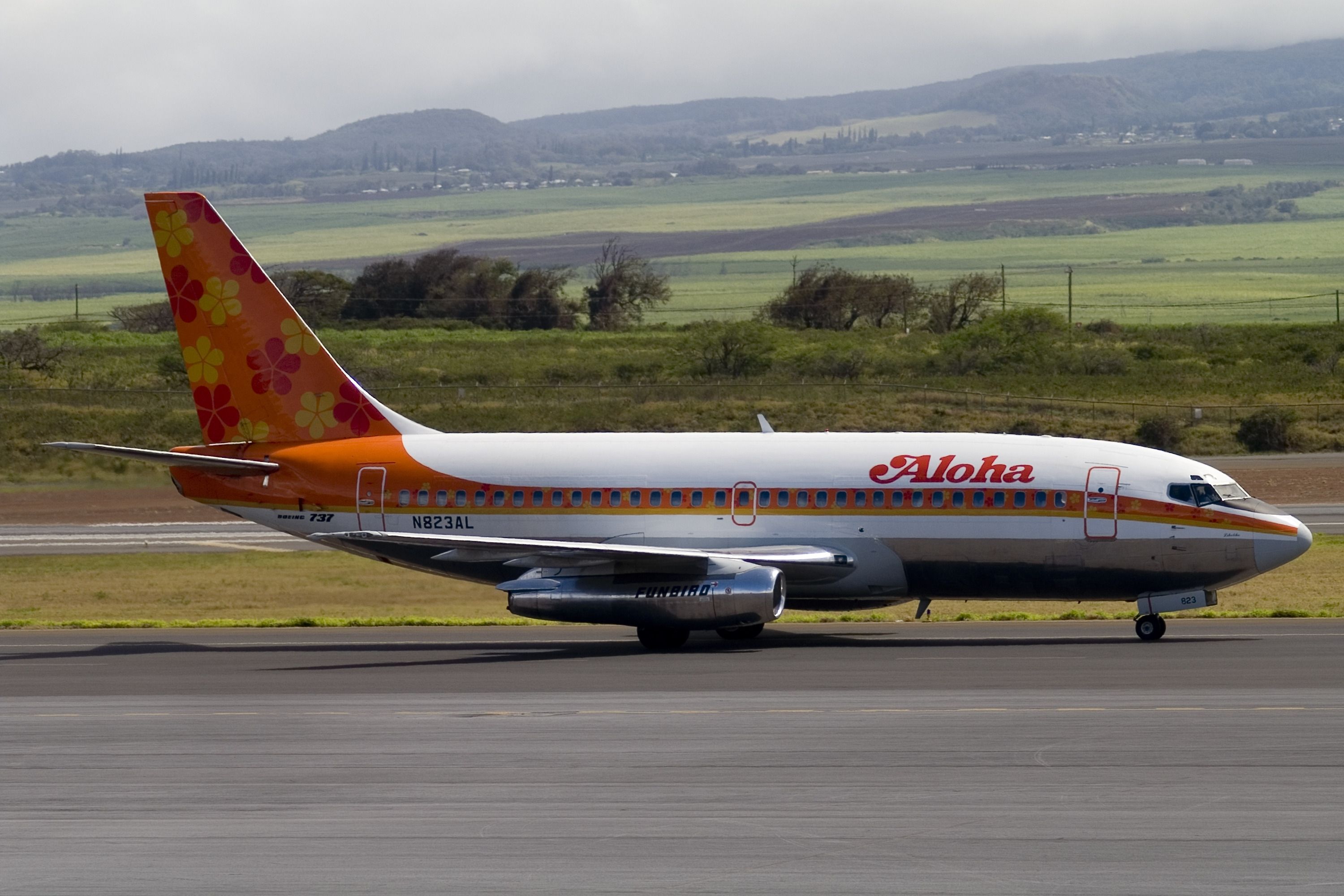
Find out more:
Aloha Flight 243: How A 737 Landed Safely After Losing Its Roof
Looking at one of the most unorthodox flights in history.
2
Pacific Wings
39 years of service
This airline’s origins go back to 1974, when Pacific Wings started operations under a different name: Air Nevada. Initially, the carrier was an on-demand charter operator, but in 1978, it changed its business model to a scheduled carrier and started offering direct services between Las Vegas (LAS) and Grand Canyon (CGN) to Hawaii. However, by 1998, the airline’s operations had all been suspended.
Photo: Bill Abbott I Flickr
Nonetheless, the carrier quickly returned to life as Pacific Wings, headquartered in Kahului. The new carrier focused on offering cheap air links between the Hawaii islands. In 2007, there was a rebranding which led to the name PW Express, whose fleet was made of:
- Cessna 402s
- 208B Grand Caravans.
Following a security incident in Kahului, PW Express shut down in 2009. Pacific Wings continued to operate just three routes until 2013, when the airline officially ceased operations entirely.
3
Island Air
37 years of service
The relevance of air transport for a country composed of islands is evident in the name of the third longest-serving historic Hawaiian airline from the past, Island Air. Also, in this case, the airline started off with a different name, Princeville Airways.
Seven years after its foundation, in 1987, the Aloha Air Group, the parent company of Aloha Airlines, acquired the Hawaiian carrier. Following the acquisition, the airline’s name was changed to Aloha Island Air. The decision to acquire the small airline came about to leverage its fleet of smaller aircraft to operate routes where the Boeing 737-200 could not be deployed. A second rebranding of the company came in 1995 when the airline was renamed Island Air.
Photo: Bill Abbott I Flickr
Island Air’s fleet relied mainly on regional aircraft, as shown in the table below:
|
Aircraft type |
Number operated |
|
ATR72-200 |
5 |
|
De Havilland Canada (DHC)-6-300 |
9 |
|
De Havilland Canada (DHC)-8-100 |
12 |
|
De Havilland Canada (DHC)-8-Q-200 |
3 |
|
De Havilland Canada (DHC)-8-Q-400 |
7 |
A financially troubled airline throughout its history, Island Air progressively reduced its network until 2017, when the carrier was operating flights to four cities only:
- Kona (KOA)
- Lihue (LIH)
- Kahului (OGG)
- Honolulu (HNL).
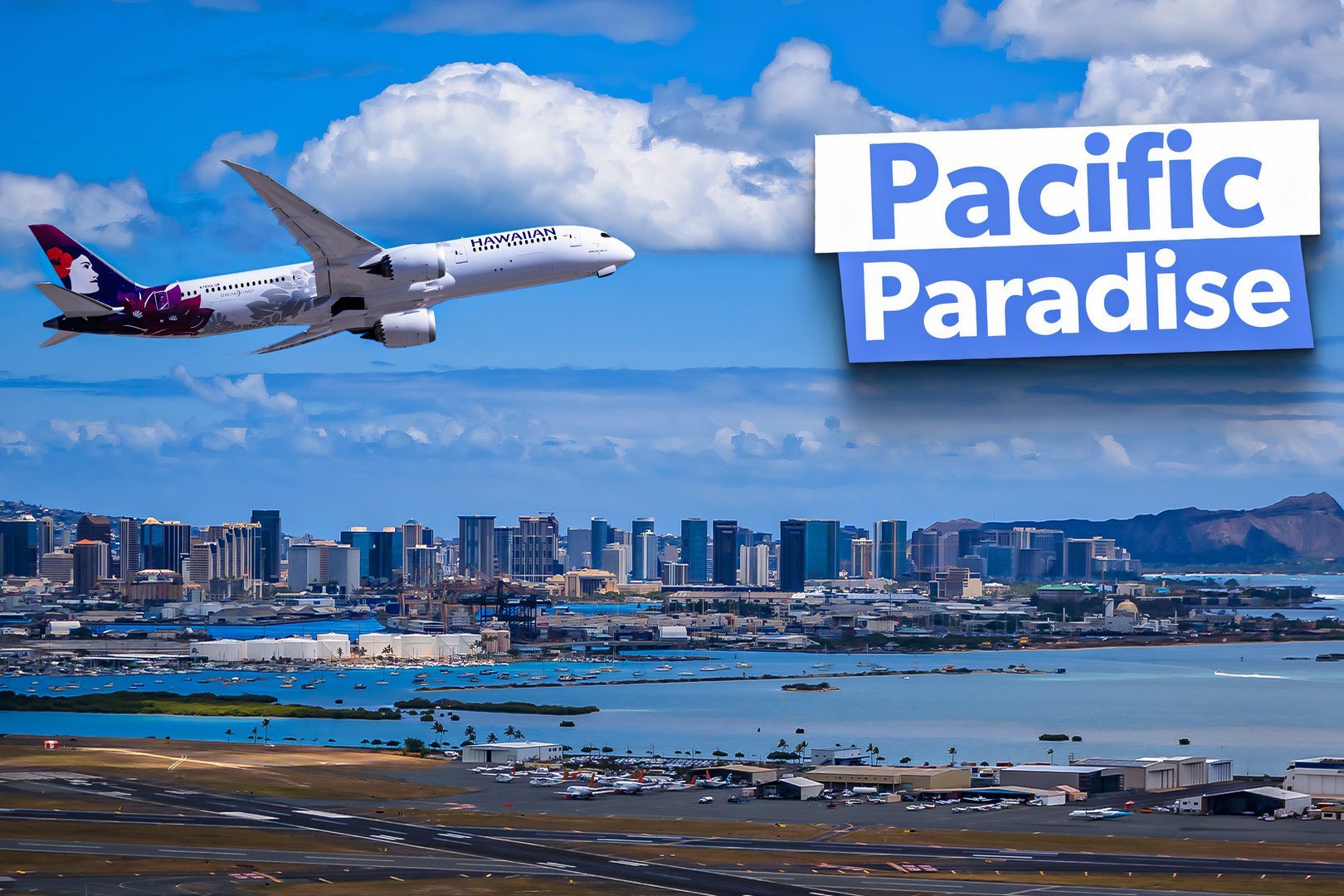
You might also like:
Pacific Paradise: A Pilot’s Perspective On Honolulu International Airport’s Operational Quirks
Insights into operating into and out of the gateway airport for the Hawaiian Islands.
4
Mid Pacific Air
14 years of service
Mid Pacific Air, perhaps as the name suggests, had a solid link to the Pacific region. An example of that is its first aircraft type: the Japanese-built NAMC YS-11 turboprop. The carrier started operations in 1981, positioning itself as a low-cost carrier.
Based in Honolulu, Mid Pacific later expanded its fleet by investing in the Fokker F28 in 1985. Interestingly, this airline focused well beyond Hawaii by establishing a base in Las Vegas (LAS), from where it operated scheduled services to:
- Grand Canyon (GCN)
- Burbank/Bob Hope (BUR)
- Orange County/John Wayne (SNA)
- Fresno (FAT).
Photo: GCMaps
The fate of Mid Pacific was sealed by the stronghold Hawaiian and Aloha Airlines benefitted from in the domestic market. In 1988, the airline ceased commercial operations. However, Mid Pacific is an excellent example of a resilient carrier. Indeed, the brand was revived as a cargo-focused venture in Lafayette (LAF), Indiana.
The Mid Pacific brand also evolved into a commuter carrier, Reno Air Express, operating British Aerospace BAe Jetstream 31s from San Jose International (SJC). This adventure went on until 1995, when Mid Pacific, in all its forms, officially disappeared from the scene.
5
Ohana by Hawaiian
Seven years of service
Kudos to the founder of the name of this airline. Indeed, thanks to the Disney movie “Lilo & Stitch,” whose story takes place in Hawaii, the word “Ohana” has become one of the most known (and loved) Hawaiian words in the world.
Photo: Bill Abbott I Flickr
In 2014, Ohana started operating as a regional subsidiary of Hawaiian Airlines. The airline flew four ATR42s, owned by Hawaiian Airlines and operated under contract by another airline, Empire Airlines. Additionally, the carrier operated three ATR72 cargo aircraft. The regional airline’s schedule included eight destinations:
- Honolulu (HNL)
- Kapalua (JHM)
- Lanai (LNY)
- Molokai (MKK)
- Lihue (LIH)
- Kona (KOA)
- Kahului (OGG)
- Hilo (ITO).
Photo: GCMaps
However, the end of Ohana by Hawaiian came in 2021, following the significant disruption to the industry caused by the COVID-19 pandemic.

Find out more:
End Of An Era: Hawaiian Airlines Cuts Turboprop ‘Ohana Services

